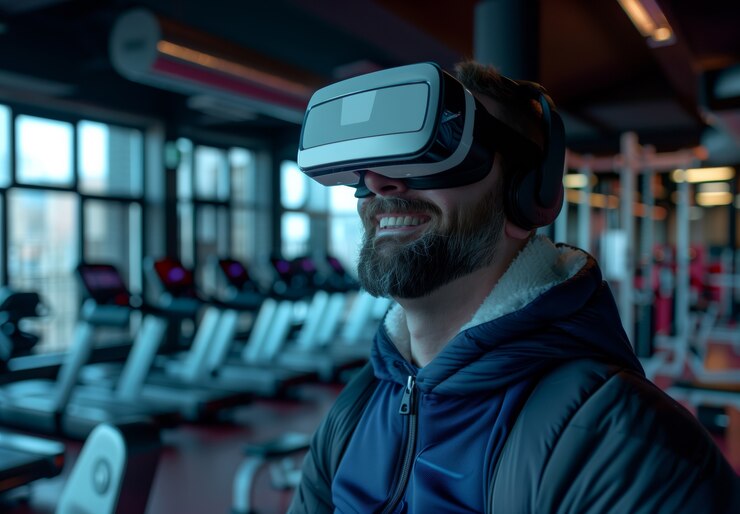13 Sep

|
Getting your Trinity Audio player ready...
|
In an era where technological advancements reshape our daily lives, simulators stand out as one of the most transformative tools across various fields. From aviation to healthcare, the evolution of simulators has not only enhanced training and operational efficiency but has also opened new avenues for innovation and problem-solving. This blog explores the evolution of modern simulators and their profound impact on industries and society.
Table of Contents
The Early Days of Simulation
The concept of simulation is not new; it dates back to ancient times when rudimentary models were used to replicate real-world scenarios. Early examples include mechanical devices designed to train soldiers or navigate ships. However, it wasn’t until the 20th century, with advancements in electronics and computing, that simulators began to evolve into sophisticated tools.
One of the pioneering developments was the flight simulator, initially used for pilot training during World War II. The Link Trainer, introduced in the 1920s, marked a significant milestone. This rudimentary device, often referred to as the “Blue Box,” provided pilots with a simulated flying experience using basic mechanical controls and a moving platform. It laid the groundwork for more advanced systems that would follow.
The Rise of Digital Simulation
The advent of digital technology in the late 20th century revolutionized simulation. Early computer simulations were primarily used for scientific research and military applications. The development of graphical user interfaces and increased computational power allowed for more complex and realistic simulations.
In the 1980s and 1990s, simulators began to infiltrate other sectors, including education, healthcare, and entertainment. The introduction of high-fidelity graphics and real-time processing made it possible to create highly realistic virtual environments. Flight simulators, for instance, evolved from mechanical contraptions to sophisticated software that could mimic every aspect of flying a plane, from weather conditions to mechanical failures.
Modern Simulators: A Technological Marvel
Today, modern simulators are an integral part of numerous industries, transforming how training, research, and decision-making are approached. Here’s a look at some of the most impactful applications:
Aviation and Space Exploration
Modern flight simulators have become essential in pilot training, offering an immersive experience that replicates real-world conditions with astonishing accuracy. These simulators allow pilots to practice emergency procedures, learn new maneuvers, and experience different weather scenarios without the risks associated with real flights. Similarly, space agencies use simulators to train astronauts, prepare for missions, and conduct research in a controlled environment.
Healthcare and Medical Training
In healthcare, simulators play a crucial role in training medical professionals. Surgical simulators enable surgeons to practice complex procedures, improving their skills and confidence before performing operations on real patients. Patient simulators, which mimic various medical conditions, provide invaluable hands-on experience for medical students and practitioners. These tools enhance patient safety and the overall quality of care.
Automotive and Transportation
The automotive industry uses simulators to design and test vehicles, from improving safety features to developing autonomous driving systems. Driving simulators help in assessing driver behavior, testing new technologies, and training drivers. They offer a risk-free environment to evaluate how different factors, such as road conditions and vehicle performance, affect driving.
Military and Defense
Military simulators are used for tactical training, mission planning, and strategic decision-making. They offer realistic scenarios that help soldiers and commanders develop their skills and strategies. These simulators can replicate combat environments, simulate enemy behavior, and test various combat tactics, enhancing readiness and effectiveness.
Entertainment and Gaming
The gaming industry has experienced significant growth thanks to the rise of simulators. For instance, in-home golf simulators now offer an immersive experience, allowing users to practice their swing and play on virtual courses from the comfort of their homes. Advances in graphics, haptic feedback, and virtual reality (VR) technology have led to incredibly realistic and engaging experiences, enabling users to explore, interact, and enhance their skills in once unimaginable ways.
The Future of Simulation
As technology continues to advance, the future of simulators looks promising. The integration of artificial intelligence (AI) and machine learning is expected to further enhance the realism and adaptability of simulators. AI-driven simulators can adapt to user actions, provide real-time feedback, and create dynamic scenarios that evolve based on user decisions.
Moreover, the rise of augmented reality (AR) and mixed reality (MR) technologies will likely expand the applications of simulators, offering even more immersive and interactive experiences. These technologies will enable users to blend virtual elements with the real world, creating new opportunities for training, education, and entertainment.
In Conclusion
The evolution of simulators from basic mechanical devices to advanced digital systems highlights their transformative impact across various fields. By providing realistic and controlled environments, simulators have revolutionized training, research, and decision-making.
As technology continues to advance, the potential applications of simulators are boundless, promising even greater innovations and enhancements in the future. Whether in aviation, healthcare, automotive, military, or entertainment, simulators will continue to play a pivotal role in shaping our world and driving success.


